
Did you know that staring at a fish tank has a calming and soothing effect on humans. It’s true.
So when someone wants to have a fish tank at home, it is not just for its aesthetic value.
Whatever your motivation or reason behind wanting to have one, you need to know that keeping fish at home is not as easy as it may sound. Fish require proper care and their aquarium, proper cleaning. Carelessness can and has often led to fish dying.
This blog is for those who either keep fish as pets or are thinking of having them. If you want your fish to last long, follow these pro tips on how to clean an aquarium. Before that, here are the things you need to have to clean your aquarium properly and thoroughly.
Supplies to clean your aquarium
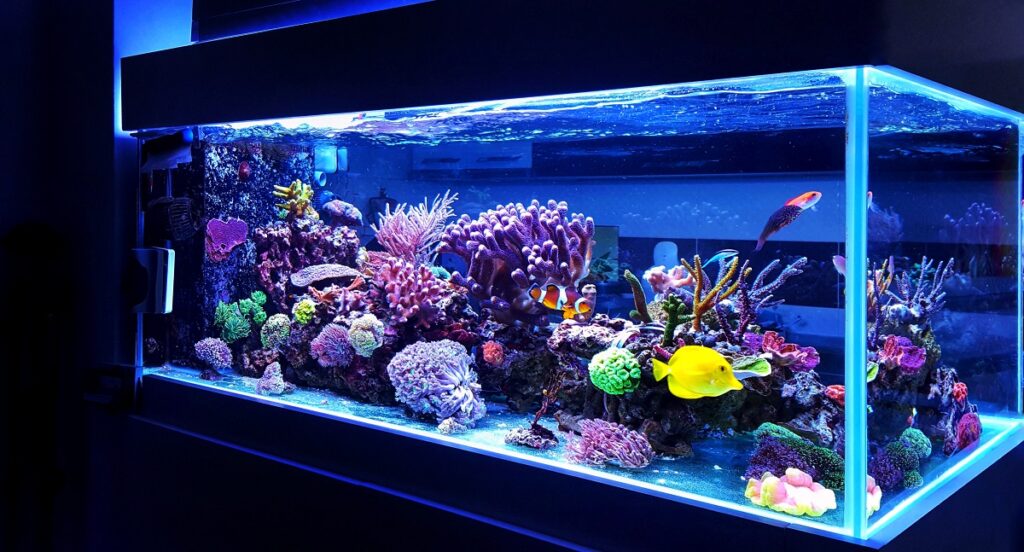
Using a worn-out piece of cloth or shampoo/soap to clean your aquarium will only toxify the marine ecosystem of your aquarium. So, buy the following items instead (you may have some of the items at home already):
- Aquarium water test kit
- Algae scraper
- Blade or algae scraper blade
- Toothbrush
- Scissors
- Declorinator/ Water conditioner
- Glass cleaner
- Microfibre towel
- Aquarium siphon or gravel vacuum
- Large bucket
Now that you have the supplies needed to clean the aquarium, here is how to clean an aquarium in 6-simple steps.
How to clean an aquarium?
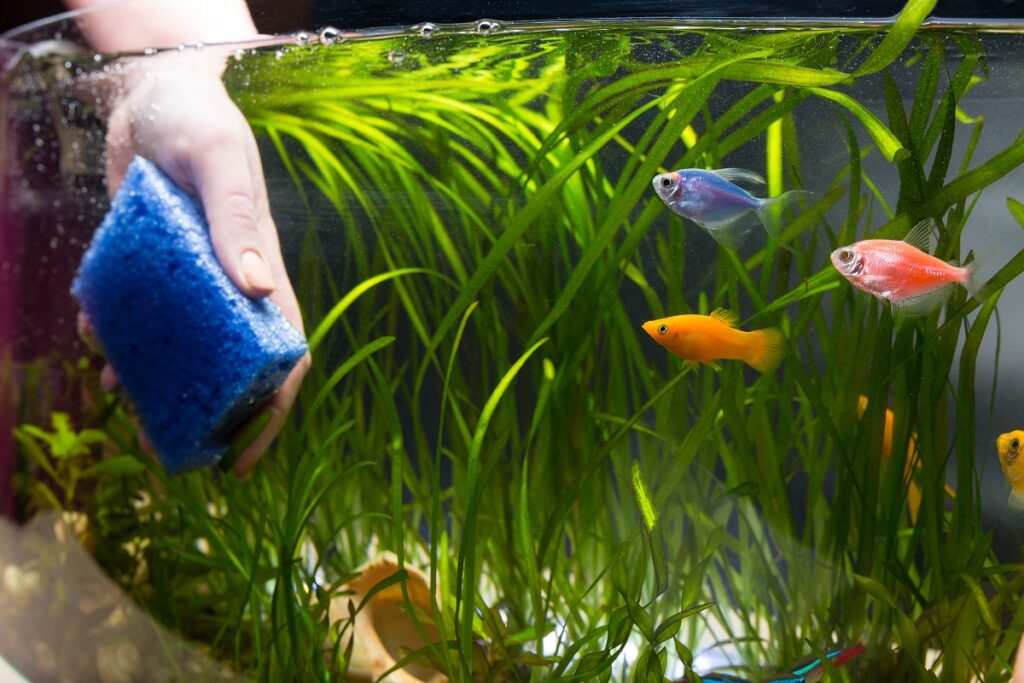
Step 1: The first thing you should do is take out the fish into a separate bowl. If the aquarium water is clean and there are mild algae on the walls, there is no need to take the water out to clean.
However, if it’s dirty, it’s better to replace it. Use an aquarium siphon or gravel vacuum to extract the water into the bucket. Also, vacuum the substrate or the base to extract debris if any is left under the rocks.
Note: Make sure to turn off the equipment before taking out the water. The aquarium electric appliances are not supposed to run in the air and may be damaged if used in the open air.
Step 2: Use an algae scraper to rub off the algae from the surface of the glass. If the algae are thick, use algae scraper blades to scrape them off from the surface. Don’t use any soap or detergents; it may be toxic for the fish.
Use a toothbrush against the walls and corners to brush off the algae. Be gentle, or you may scratch the glass or the acrylic.
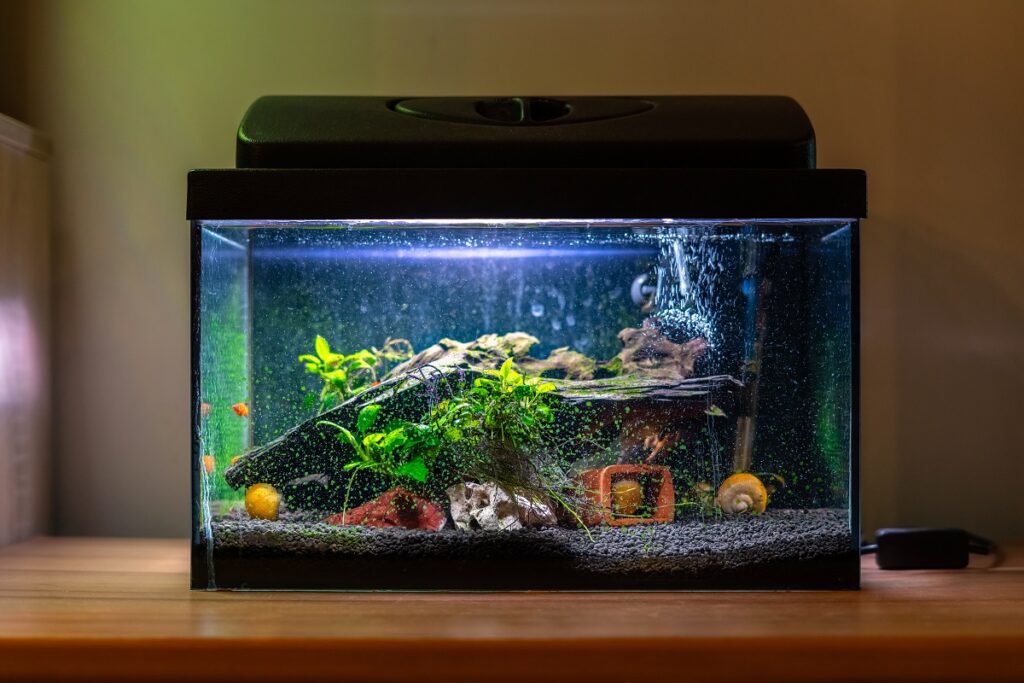
Step 3: Now the glass is clean. The next step is to clean the plants or the artifacts you have placed within. If you have placed decor plants, then you can simply rub them off with gentle algae scrub or any other pad to clean them off. After cleaning, rinse it to remove any debris left.
If the plants are natural, cut the dead leaves and remove excessive foliage. If these are stem plants and have outgrown, you can cut them. Plant them somewhere else if needed. Wash the artifacts and remove any algae if found.
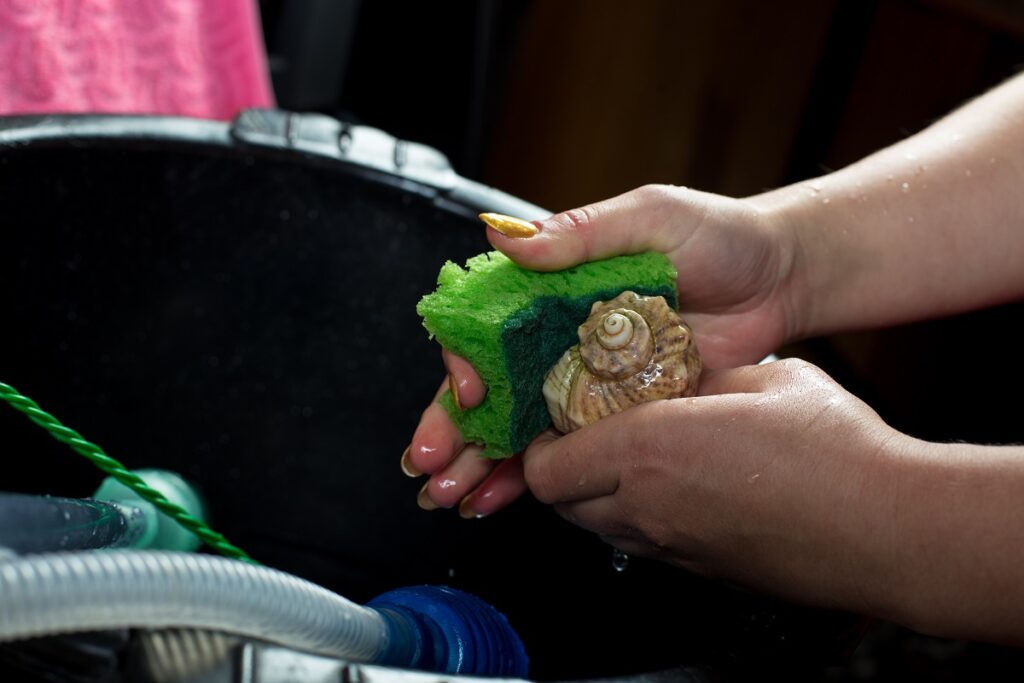
Step 4: The next step is to clean the filter. This part gets dirty first because it collects the algae, debris and other clogs present in the water. If the filter has a sponge in it, take it out and thoroughly rinse and squeeze it.
Wash the filter media and gently splash or swish it to get the water out along with the debris to clean the corner box filter.
Step 5: Enough cleaning on the inside. The exterior also needs to be spotless. Use the microfibre towel and wipe the exterior wall with a glass cleaner. Wipe thoroughly and remove any smudges or dirt.
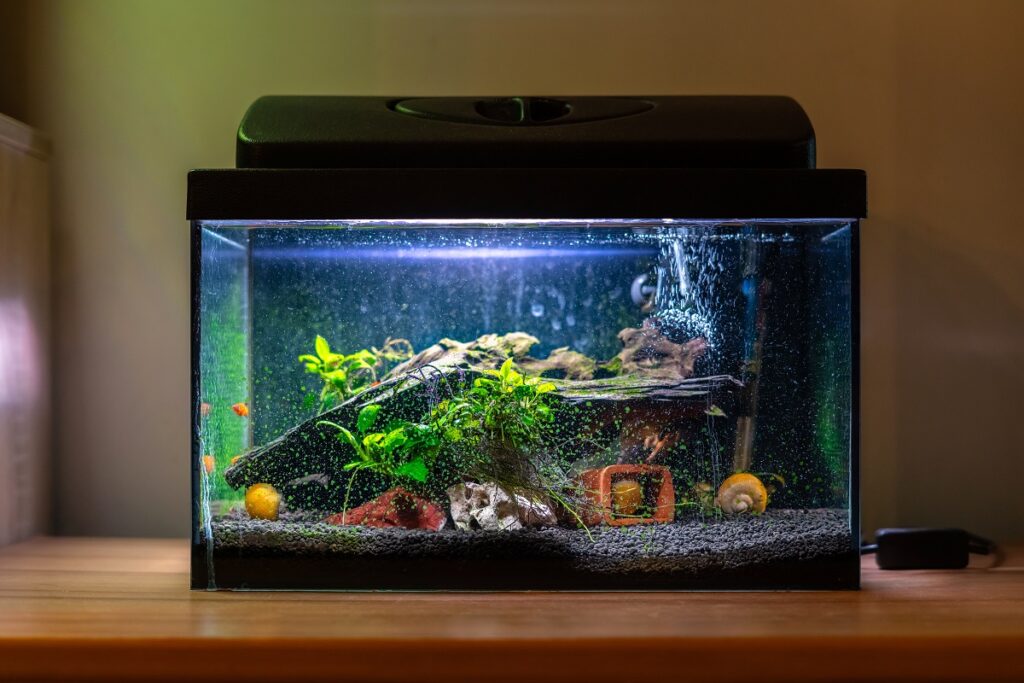
Step 6: Check again thoroughly if there are any algae left on the walls or any other area. Once the cleanliness is assured, you can fill it again with clean water. Before adding fish to the aquarium, first switch on the filter for about 30 minutes, so enough oxygen is added to the water. Now put the fish back into the clean water.
When to change the water?
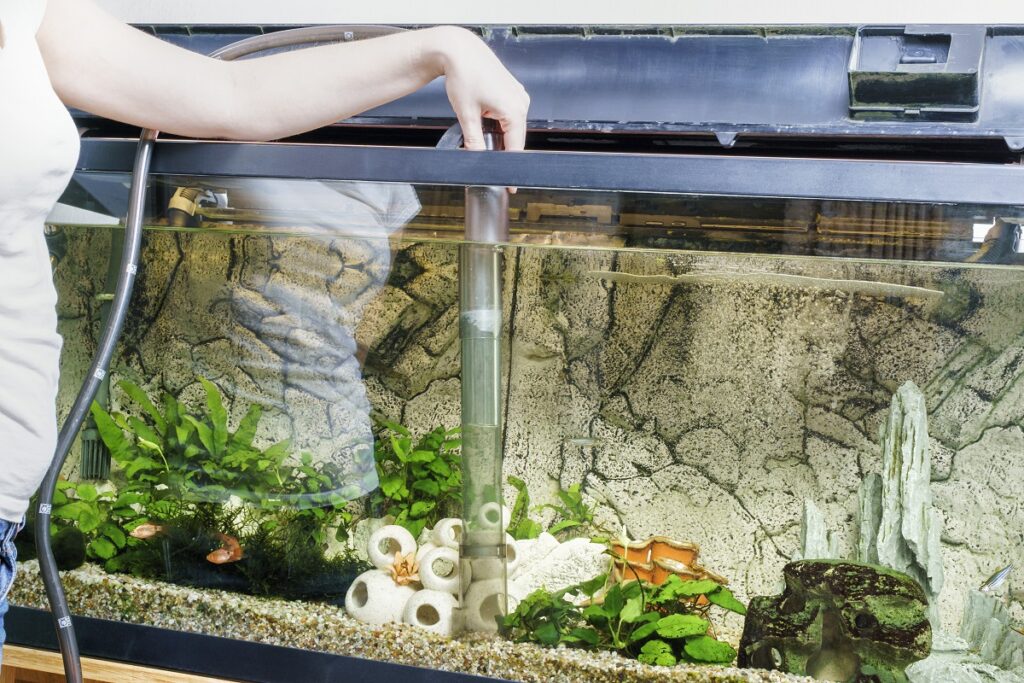
You’d be wasting water if you replace it on a daily or bi-weekly basis.
So how often should you change the water? To know if your aquarium needs water replacement, simply get an aquarium water test kit. Dip it into the water and check the toxicity levels. Dip the water test strip into the water, and match the color with the toxicity levels shown on the kit.
Knowing when to change the water is crucial as it can help your fish live longer and slow down algae growth in the fish tank.
The Do’s and Don’ts of aquarium cleaning
The Don’ts
- Don’t replace water daily or bi-weekly.
- Never dry your aquarium entirely, as it can unbalance the biological balance. Don’t lean into the walls as it may damage the joins and the seams.
- Never use soaps and detergents; they may be toxic for fish.
- Don’t use chlorine to clean the water. Only use certified dechlorinator or water cleaner.
- Don’t leave aquarium lights on 24/7.
- You shouldn’t only clean the aquarium when it’s excessively dirty. Cleaning it regularly can improve the life of fish and the water.
- Don’t place the aquarium in direct sunlight.
- Only feed your fish what it can eat within 2-minutes. Extra food will be left floating in the water, and it can be the home for molds and algae.
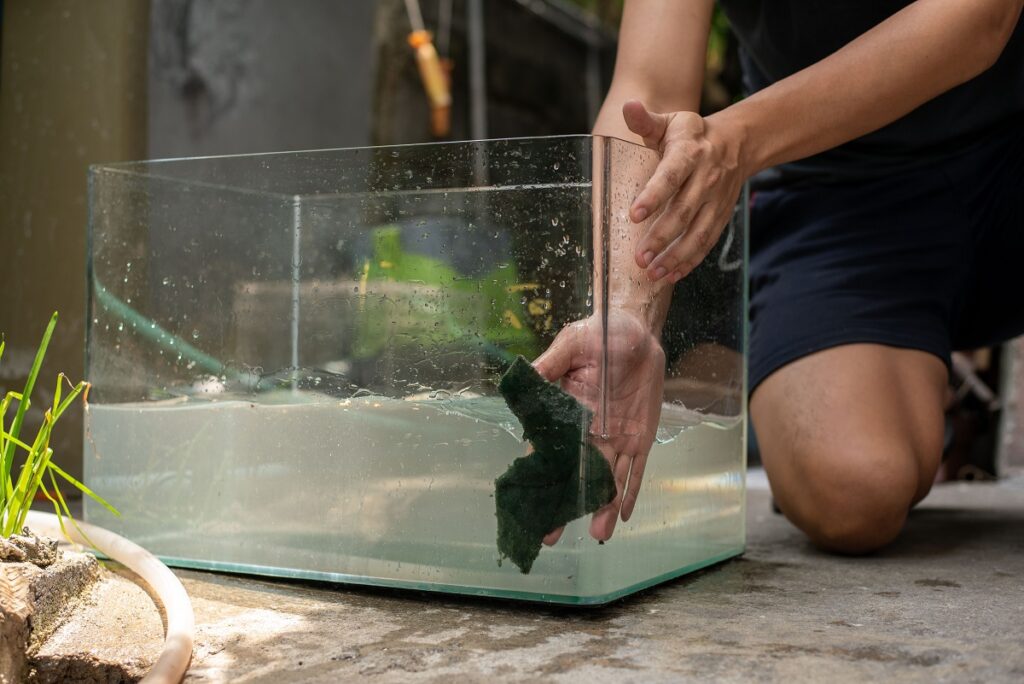
The Do’s
- Test the pH levels of the water, nitrate, phosphate and alkalinity. It shows the toxicity levels of your water. Fish can die, choke or suffocate in highly toxic water.
- Test your newly bought aquarium for leakages for 2-3 days before putting fish in it.
- Replace one-quarter of the water every two weeks.
- Always buy similar fish for a balanced ecosystem.
- Change filter media at least once a month.
- Check water temperatures periodically.
What to learn from this guide?
One of the biggest reasons your fish don’t live long is a dirty aquarium. Unfortunately, many don’t know how to clean the fish tank properly. Using wrong tools and wrong chemicals can make your aquarium toxic.
We’ve laid down 6-simple steps to clean the aquarium in this blog. Let us know if this guide helped you clean your aquarium any better.








Leave a Reply